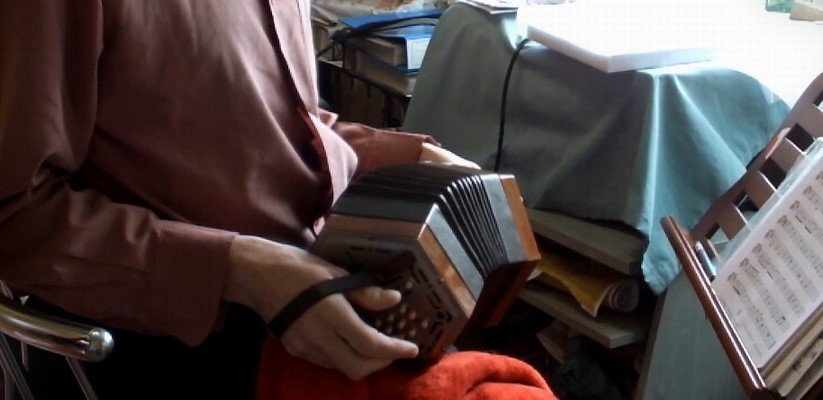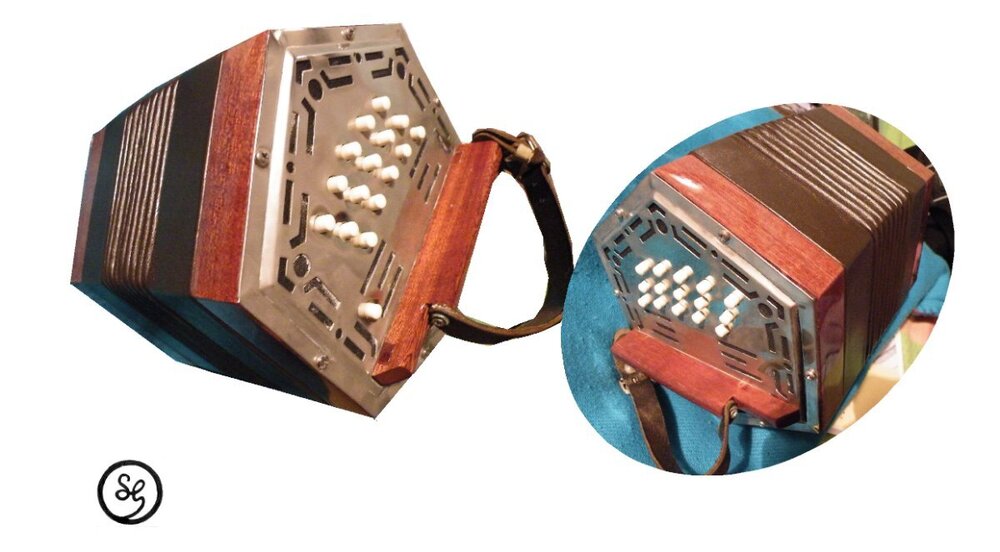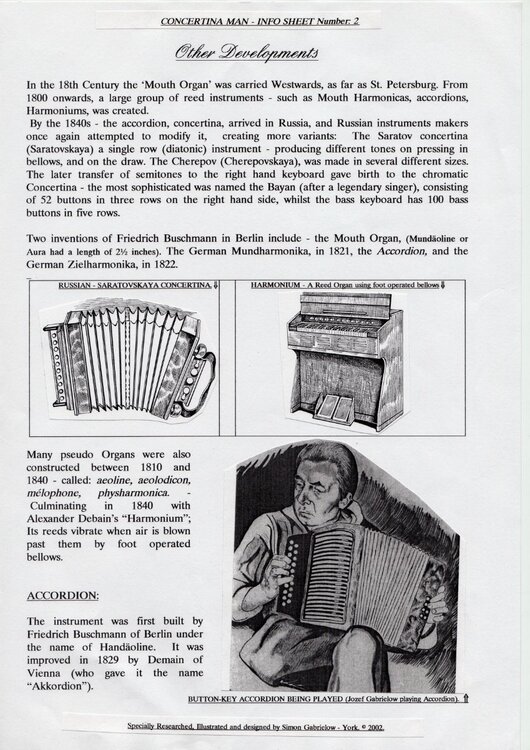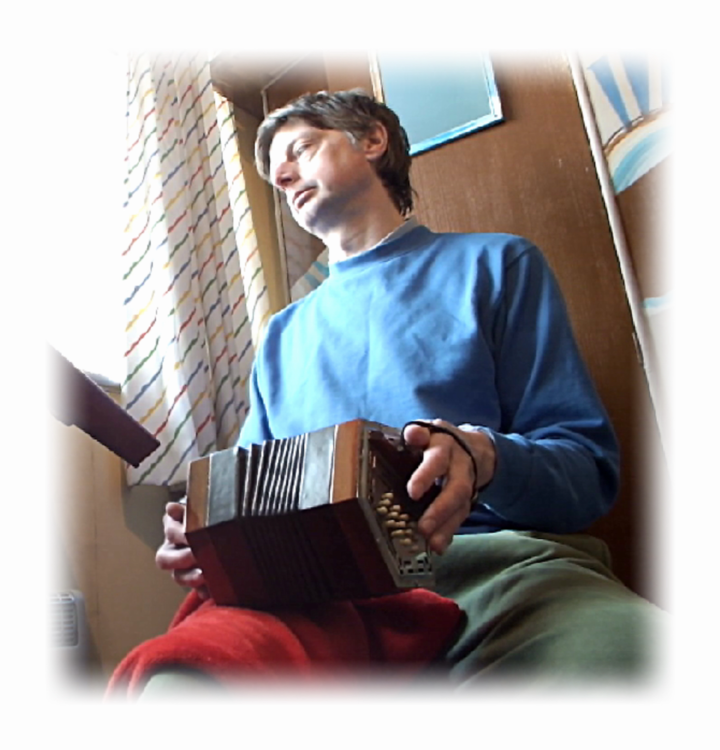-
Posts
1,325 -
Joined
-
Last visited
Everything posted by SIMON GABRIELOW
-
Thanks Jdms for adding to my topic on concertinas; particularly referring the Higher make. Yes, I believe there has, for a long time, been a lot of misunderstandings in 'free reed' circles, over certain makes being allowed to be included in the devine world of free reed family; whilst others are deemed slightly as "outsiders". It is true that sometimes you can come across instruments which are harsh in tone, or could be better made, but that can go for many other makes of concertina too! Just think how many thousands of guitars are made every year! And yet people can buy serviceable one for considerably little cost these days! So manufacturing in mass can be a good democratic thing to do, to give access to more people to have a go at something new. Surely that is a good thing? Isn't it?
-

1980's Klingenthal 401 - never used
SIMON GABRIELOW replied to Alli's topic in General Concertina Discussion
That little title brought back memories for me; my first concertina I bought in 1988 was made in Kligenthall harmonkawerke ( forgive spelling!) It had two rows, nice box like shape, and full round buttons, easy to press. I still have photo of it here at home but instrument long gone. It had tiny decorative brass corner pieces, which I took off to keep. I bought mine in 1988 in York, through music store for £50. That was over 30 years back so who knows what you'd get now? -
He'll, I was tempted to add the system I learned to begin with but fear it may confuse further! Mine labelled the 1 to 5 for each finger then other numbers for other button rows but is extremely easy to use! It has marks above numbers for bellows out, and no number means in with bellows. Some of the numbering on your sample is really very similar actually.
-

Zoom H2N Vs. Blue Yeti Or What?
SIMON GABRIELOW replied to Don Taylor's topic in General Concertina Discussion
I found this topic interesting; I never knew yetis could sing, never mind use microphone! But, seriously.. I have recorded my own music using a tablet computer straight into its built in mic, and works fine! It records onto MP4 format in stereo. -

Wrong instrument or just need more practice?
SIMON GABRIELOW replied to dmksails's topic in General Concertina Discussion
Personally adding to the conversation, and on use of air valve with Anglo.. I like to think of how a woodwind player say flautist, recorder, player has to think about when to breathe in playing music; in a place where will not ruin the melody too much, and when convenient to do so. Remembering that a composer will expect performer to take sensible steps in breathing [or they will pass out!] .. In fact think of when you would yourself in singing a tune wish to breathe and perhaps then apply this thought in using your Anglo [as it has its own lungs, its bellows to breathe with]. Some old music books show breathing places, for where instrumentalists can take breath, and are sometimes a good reference for this effect. But overall its about trying things out yourself to see ! Always I find have bellows around half way inflated at start of a piece seems best to begin with. -

Getting better at playing obbligati?
SIMON GABRIELOW replied to Gary Chapin's topic in General Concertina Discussion
Gary mentions playing along with singer; sounds wonderful. Not done this myself but wish you best of luck with it.. will take sensitivity to know when to support them, and get balance right between volume of yourself on concertina and singer! Like when pianists accompany a singer and generally do not always dominate proceedings unless to support or fill in. Just think if you happen to get a note wrong you can blame it on the singer instead [as being their fault for being a bit flat etc..,!!]😊 -

PM appearing in RSS feeds
SIMON GABRIELOW replied to DaveRo's topic in Forum Questions, Suggestions, Help
Hello just reading this apparent problem however hope it is not my own current in-experience on this site which caused any issue.. Apologise if it was! It was only a general message anyway and nothing that should not be seen by anyone else. -
Why not just sit there yourself physically and when someone goes online and presses keyboard note... You actually manually play it for them on your own concertina !!!!? (Just a joke) but your idea sounds good! 😄
- 77 replies
-
- 1
-

-
- learning anglo
- composition
-
(and 1 more)
Tagged with:
-

"Sticking buttons"
SIMON GABRIELOW replied to Alastair Macdonald's topic in Instrument Construction & Repair
Just read the article of jamming buttons on your concertina; for a short time I experienced similar problem on my ( Hiohner) branded Anglo. With mine, at first, the button, lever, movement was stiff. I learned how to improve it myself after a time; personally I used a small amount of a Silicone type lubricant ( that you get in a can with fine applicator ) I put tiny amount of the lube onto a fine artist brush first, and then used this to VERY CAREFULLY brush just into the mechanism, ensuring that not too much was applied than was needed. Ever since for years now .. no sticking buttons, and smooth movement overall! Just a hint; but not sure if will work with your make.. so be cautious first. -
Great, you made a good choice; a Concertina is the sort of instrument many seem to go into often out of curiosity at first; myself back in past - I bought my first one to accompany my father on his button key accordion, but I had never until then really considered one before; it was an impulse buy! However, once I got that first one; I was transfixed by its potential and determined to learn how to play. Once you get the knack of using them [any style] you will, I think, never put it down! There's a lot of potential in such a small portable instrument, in note range, and effects! Some learner books use surprisingly simple tablature which is incredibly straightforward to master and understand, then the rest is up to you! Enjoy learning and let know how you get on. I have hundreds of transcriptions that suit our concertinas myself gathered over decades; if you ever want a copy let me know; many are ancient recorder music really, but work wonderfully on concertina [all on melody line only so easy to read]. Best of luck!
-
I read the article via the links you put in and was very interesting; how the straps were altered and adjusted in a different way to usual. It reminded me of how I use my own Anglo style instrument, also in a very unusual manner .. loosely fitted over the whole hand, rather than with thumb outside! I've always done it this way, and it gives great mobility to the fingers. And you could, theoretically use thumb more, on left hand, on the keys. [ although I don't do this as it involves stretching too much]. Image attached show my hands seemingly loosely fitted inside the straps!
-
That's a lovely tale about Whitby, I can just visualise it happening (I spent several holidays at Whitby in past)! Yes I've heard people playing the even lower notes below that C and it's amazing to hear!! It's a bit like, in miniature, when you hear an organ use the really big deep pipes to let out the vibrating bass notes!
-

anglo concertina lessons - North London
SIMON GABRIELOW replied to LisaS's topic in Teaching and Learning
When I first started to learn a concertina I found a little instruction book very useful 'first steps' it was called. It showed layout of several types of concertina in simple to understand diagrams. It was followed by some musical examples numbered with tablature [ numbers with V shapes above according to bellow requirement]. This got me going quite quickly. It really is a good system of starting off, as you can apply the same tablature to other music yourself later on. Think of it this way as a hint if you say have a 30 key Anglo it has left keyboard side, and right; look at the buttons in rows of five like your fingers are in number and it seems less daunting than being faced visually with seemingly large array of white studs. Think in rows; left side, lowest notes gradually going up the scale to eventually the right hand side and so on... The tablature system, to me is best to begin with, in fact it looks so easy to some people, they often think its Childs play! Attached image is my concertina 30 key type; notice each side can be seen as having rows of five buttons each row [going along horizontally] Right side has that little extra button air valve. I am happy to give you more hints if you want.. a 20 key model still has rows in five number. Have a go and best of luck! -
Just replying to those other brave soles that are now bravely coming forth into the light and saying they play other concertina instrumental names [many normally deemed abhorrent to most people!] Hohner, and like! Well done! Sound that deepest bass note and C what happens! Out of the closet we alternative players must emerge and to flourish with hearty cheer, our instruments at the ready like an army of brave musical soldiers, to use those deep wonderful [often steely reeded] little boxes, into the world to spread the song of democracy in music and art!!!
-
It's got to be one of the largest, often misunderstood family of instruments: 'free reed' instruments.. there's so many kinds, and most none enthusiasts do not realise, unlike us, just what a wealth of types of instrument exist! If you look at encyclopedias even they show a variety of unusual types, many even I had never seen before.; Bandoneon, accordion, melodion, concertina... Anglo, english..And who knows what may still develop in the future? Hundreds of years before there was even a portative organ which had bellows fitted!!
-
Could also be air getting out at the parts where the bellows are joined into top; sometimes screws could be loose; and maybe special tape could reduce air leak. A thought occured that if you shine light ( with one end removed).. inside bellows, maybe you would see if any holes not obviously noticeable at first, with light coming through! But please it's only a suggestion don't attempt it if you are not too sure what to do!
-

concertina case Simon Gabrielow
SIMON GABRIELOW replied to SIMON GABRIELOW's topic in General Concertina Discussion
I have re-read my reply about concertina reeds, boxes, and hope I did not come across as abrupt on the matter? Indeed one does get attached ( as I am sure you know yourself) to a particular instrument; as it's part of how you express yourself, but I was only clarifying small facts; I often have a good laugh, and have a sense of humour! I think people are like their own instruments; people have lungs and so does a concertina. People have throats and voice chords; so does concertina (reeds to speak)! The sound as air let in by bellows is not unlike a sigh at the end of a long hard day's work! There we are; I have sad it! It's great to debate these things between everyone; that's how we all learn, at least I believe. -
There's been hundreds of representations of our beloved instrument in cinema over the years; not all complimentary, but even none enthusiasts will have seen a squeeze box on a film somewhere, and at some time. In this list I would say, to me at least, is an amusing take on concertina in a comedy starring Laurel and Hardy; 'Big noise', is the title.. released by Twentieth Century Fox. The plot is complex to explain, however, needles to say it's the thin one Stan Laurel who produces an Anglo concertina, and makes a comedy routine out of playing it very badly indeed ( mimed to the soundtrack) not him playing!! He pretends to play what I believe is an old English music hall sort of nonsense song. The poor concertina is then put through all kinds of other japes, too daft to describe! It's a 20 key Anglo variety of concertina ( modified).! Watch film and see what you think; at least it's cheerful if nothing else!!
-
Listened to your playing and thought it sounded good . Never mind "entry level" instrument because a promising musician should be able to get a tune out, whatever the circumstances. Anyway to me the sound seemed fine! Well done; keep up the good work!
-
It's occured to me with English system being different to my Anglo style layout, that the thumb strap on English concertina is one design in its makeup that could be improved. The human thumb was not meant to be imobile for long times, we use thumb every day and if fixed in one place, then no wonder cramp or stiffness can result ( at any age)! Perhaps a longer strap might work? With whole hand underneath for support? Not just the thumb fixed into one place?
-
Thanks for adding to my topic of bass note "C" on concertinas.. Once when I was sat outside in town I was playing my own instrument, to get some interest in artwork I was also showing... And getting fed up with being passed by.. to get more attention, I decided to let go with that one big ' bass C'.. on my concertina, really loud; I don't know if it had any effect; but I felt better for it!!!
-

concertina case Simon Gabrielow
SIMON GABRIELOW replied to SIMON GABRIELOW's topic in General Concertina Discussion
Thanks Mr. Barnett.. about my own {seemingly controversial choice in concertina) yes it is indeed more modern than many; although I have had it for nearly quarter of a century by now! But is has - whether people believe it or not, done me good service over that time. And I do take care of it best I can. -
I am always amazed by the versatility of such an instrument as our concertinas ( of all varieties).. and just how so much potential can be available within easy range of the hands! Also with Anglo type particularly I am often amazed at that deep bass note on it; by this I mean the great low "C" natural... ( One octave below middle C)! What a sound to get from something so portable ! That low C really adds power when on its own, or in a chord is lovely to blast off with!! I played that low C in a practice session inside an echoey chapel last year.. and it resounded incredibly. It reminded me of one of those huge passenger liner,steam ships, hooting as they leave port on way to exotic destination.. I call it the great SS Queen. Mary at C... ( Sorry for pun) What do you all think? About note ranges?
-
Then I am very happy with my Hybrid; there are as many instruments called concertinas, accordion, bandoneon, and even a Russian one called 'Saratovskaya Concertina' that looks more like a one row melodeon, then there are stars in the sky. They are all related in some way or manner of form. Then there's a harmonium, with its own reeds. Its all or should be very democratic.
-

Wanted To Buy - 30 Button Anglo for Beginner
SIMON GABRIELOW replied to CaptainTeague's topic in Buy & Sell
In advice for getting started on concertina; there are many views as there are people in the world, however your letter seemed familiar to me; as years ago I too was whipped up in enthusiasm to learn concertina, [mainly to accompany my late father who had button accordion].. I chose a simple two row Anglo, nicely made in wood, in Germany at that time. I loved the thing; it was used for years. Then I exhausted the number of pieces I could play on it in scope and so searched for a more chromatic instrument. I went up to 30 key Anglo variety [ Hohner] labelled instrument [which took ages to arrive in store]. There was apparently only one left in stock they had found - and it came my way! Of which I am eternally delighted; as you get a sort of creative trust or relationship build up between a musician and instrument, just as a violinist, or guitarist does with their own instruments, particularly as it is held close to you, not at arms length as in piano. I have used my Hohner branded Anglo for 23 years and it is still going strong; the few technical issues you get at beginning like sticking buttons, or the like, gradually, with patience, recede, and in my experience at least, you then get an instrument which is more responsive. For a beginner instrument myself I would only say get the best you can afford, but don't be put off by brand name superstitions or bad words against certain names on the market. And you do NOT have to spend hundreds to get a good concertina [despite what some may claim] People have often 'downed' my hohner make 30 key Anglo; but then a point is made that its still going strong after 23 years; and so why would I feel the need to change it now? Its done me well. Maybe as well as one costing hundreds in money value! Another member pointed out to you, on concertina .net. about learning to read some music also; and I would say YES to that learn to read some music for the person who gets the concertina. There are many basic books with surprisingly simple tablature layout to use; and they are surprisingly straightforward to understand! But they really help.. Best of luck to whoever gets that little reed box; try and enthuse them with its many merits and they may have a friend for life! In attached image I am playing my much loved hohner 30 key Anglo concertina at home!







